Work Experience Sheet Samples
-

Security Guard Work Experience Sheet
download now -
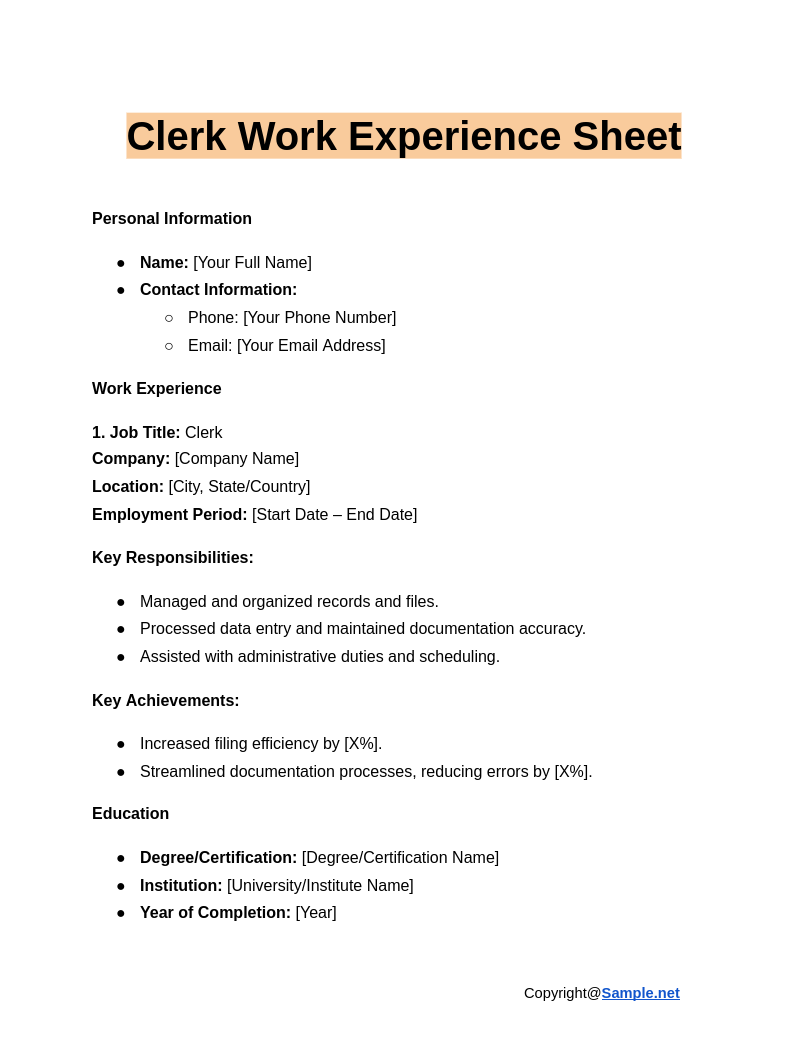
Clerk Work Experience Sheet
download now -

Driver Work Experience Sheet
download now -
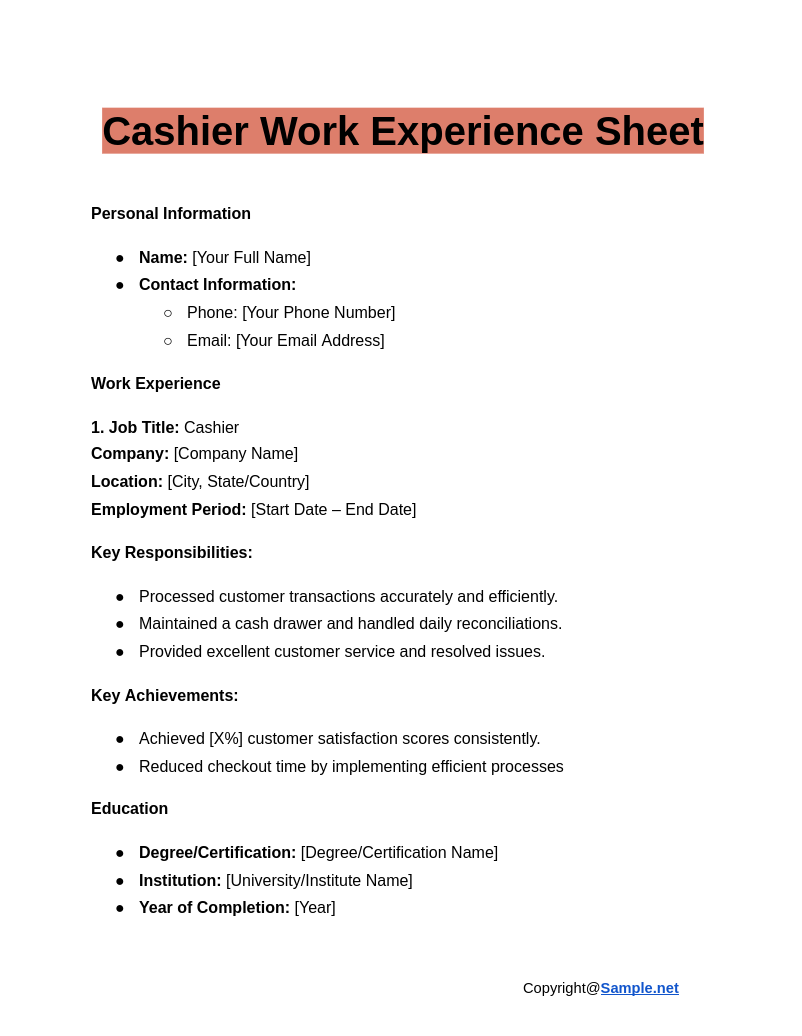
Cashier Work Experience Sheet
download now -
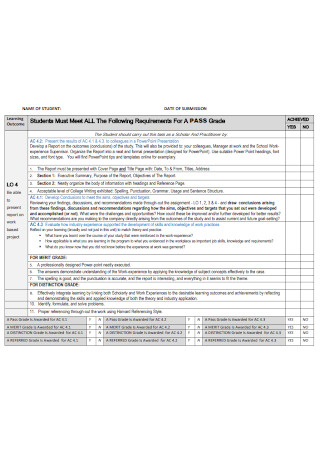
Business Work Experience Attachment Sheet
download now -
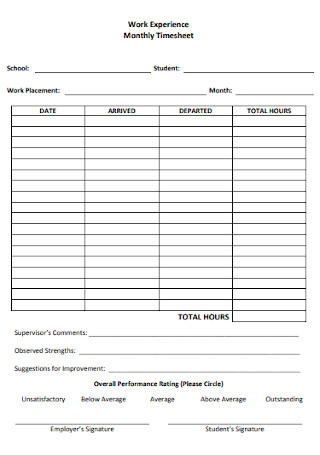
Teacher Work Experience Monthly Timesheet
download now -

Career Development Work Experience Tracking Sheet
download now -
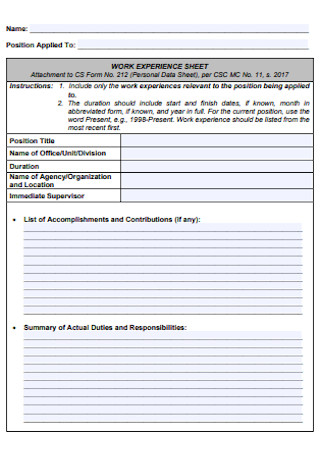
Nurses Insurance Work Experience Sheet
download now -
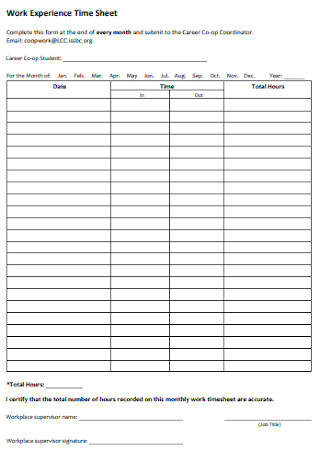
Work Experience Administrative Assistant Time Sheet Example
download now -
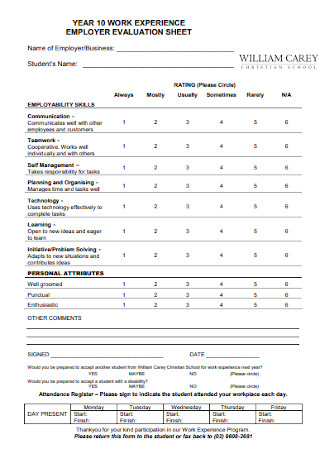
Employer Career Planning Work Experience Sheet
download now -

Prior Work Experience Sheet
download now -

Basic Work Experience Sheet
download now -
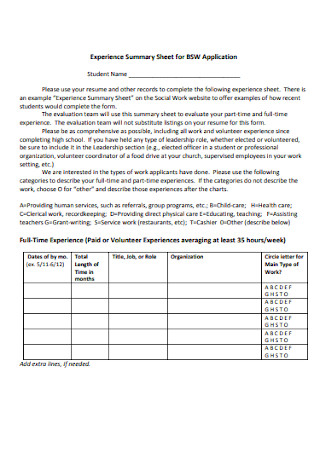
Work Experience Summary Sheet
download now -

Work Experience Sheet Example
download now -
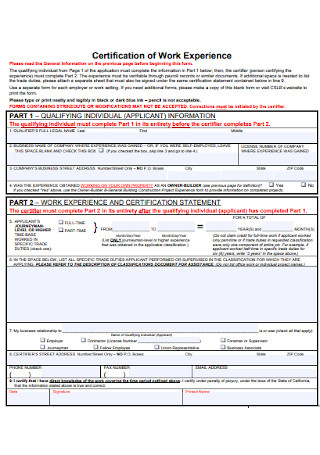
Certification of Work Experience Sheet
download now -
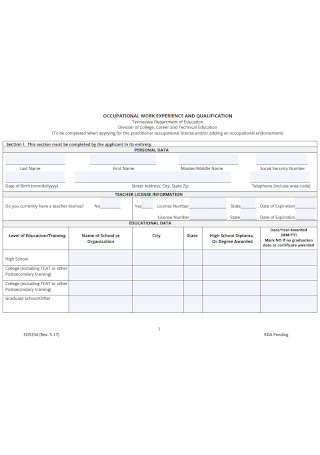
Work Experience and Qualification Sheet
download now
FREE Work Experience Sheet s to Download
Work Experience Sheet Format
Work Experience Sheet Samples
Work Experience Sheets: What Are They?
What are the Elements of a Work Experience Sheet?
How to Write Excellent Work Experience Sheets
FAQs
How do I get work experience?
What is a personal data sheet?
Are data protection fees necessary for businesses?
How detailed should a Work Experience Sheet be?
What common mistakes should be avoided?
How does a Work Experience Sheet help in career transitions?
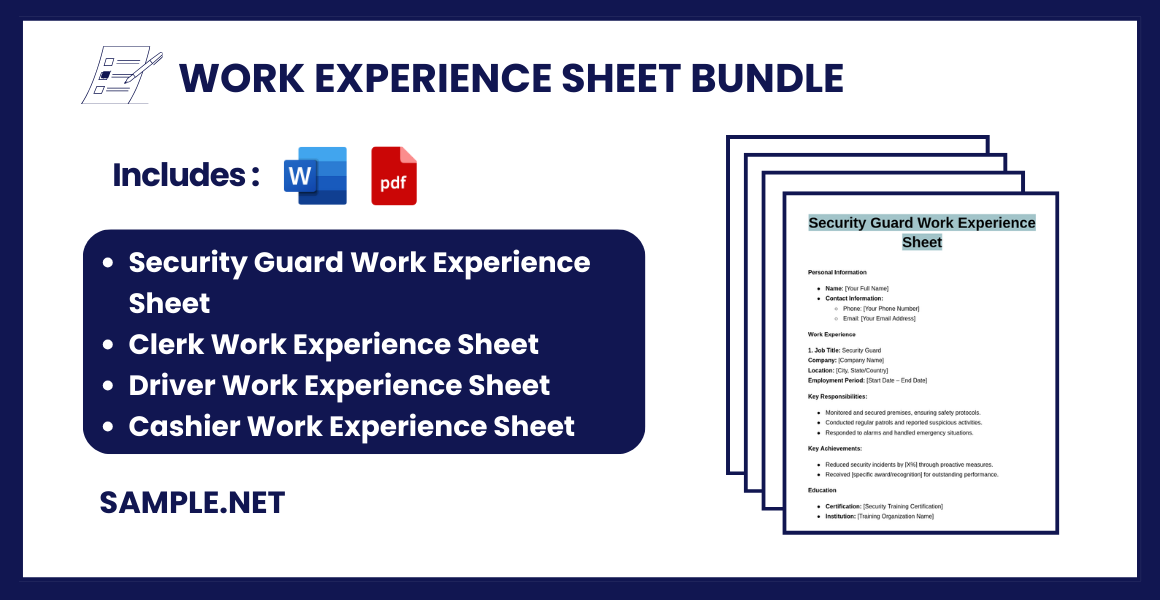
Download Work Experience Sheet Bundle
Work Experience Sheet Format
Personal Information
- Name: [Your Full Name]
- Contact Information:
- Phone: [Your Phone Number]
- Email: [Your Email Address]
- LinkedIn Profile: [Your LinkedIn URL]
- Portfolio/Website (if applicable): [Your Website URL]
Work Experience
1. Job Title: [Position Held]
Company: [Company Name]
Location: [City, State/Country]
Employment Period: [Start Date – End Date]
Key Responsibilities:
- [Responsibility 1]
- [Responsibility 2]
- [Responsibility 3]
Key Achievements:
- [Achievement 1, with metrics if possible]
- [Achievement 2]
- [Achievement 3]
2. Job Title: [Position Held]
Company: [Company Name]
Location: [City, State/Country]
Employment Period: [Start Date – End Date]
Key Responsibilities:
- [Responsibility 1]
- [Responsibility 2]
- [Responsibility 3]
Key Achievements:
- [Achievement 1, with metrics if possible]
- [Achievement 2]
- [Achievement 3]
Education (optional if included on another sheet)
- Degree: [Degree Name]
- Institution: [University/College Name]
- Year of Graduation: [Year]
Skills and Certifications (optional)
- [Skill/Certification 1]
- [Skill/Certification 2]
- [Skill/Certification 3]
Additional Notes
- [Any additional relevant information, such as volunteer experience, languages, or specific projects related to work experience.]
Work Experience Sheets: What Are They?
At the start of anyone’s career, getting work experience is one of the major highlights. And the earlier you begin to acquire experience, the better your resume will be. But if an employer or supervisor specifically wants a detailed record of work experiences in a job application, using work experience sheets is essential. Such sheets can outline when an applicant or worker started his or her job and what positions and tasks they went through. Work-driven data is helpful to see what a person has achieved automatically. In job interviews, anyone can say excellent traits about themselves. But what about their actual achievements at work? Hence, work experience documents answer that question directly and thoroughly. You can also see more on Log Sheet.
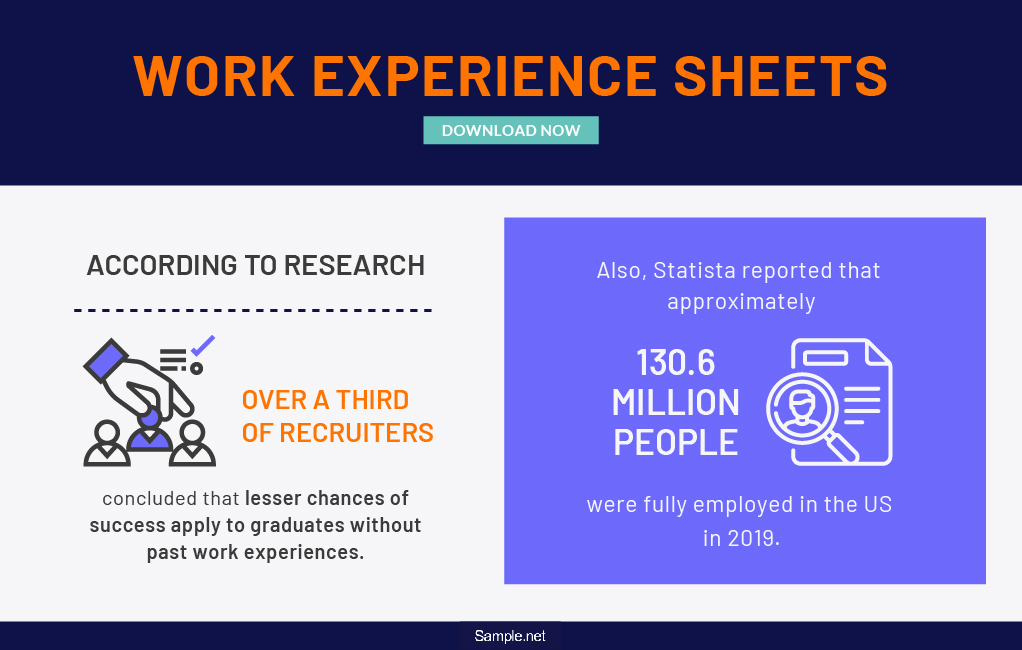
According to research, over a third of recruiters concluded that lesser chances of success apply to graduates without past work experiences.
Also, Statista reported that approximately 130.6 million people were fully employed in the US in 2019.
What are the Elements of a Work Experience Sheet?
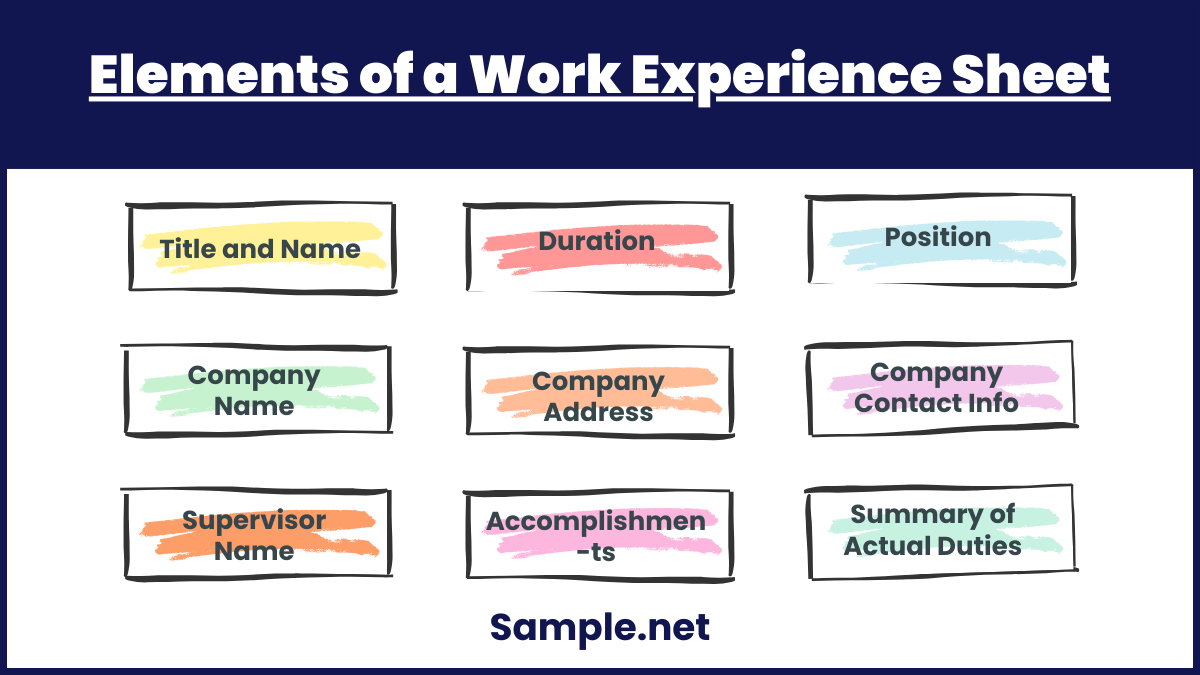
You already know what a work experience sheet is and what it is used for. But are you familiar with what details are found inside the document? Albeit people prepare a different design, style, or format in the work experience form, there are common denominators involved. In this segment, we outlined the ten elements often seen in work experience sheets.
How to Write Excellent Work Experience Sheets
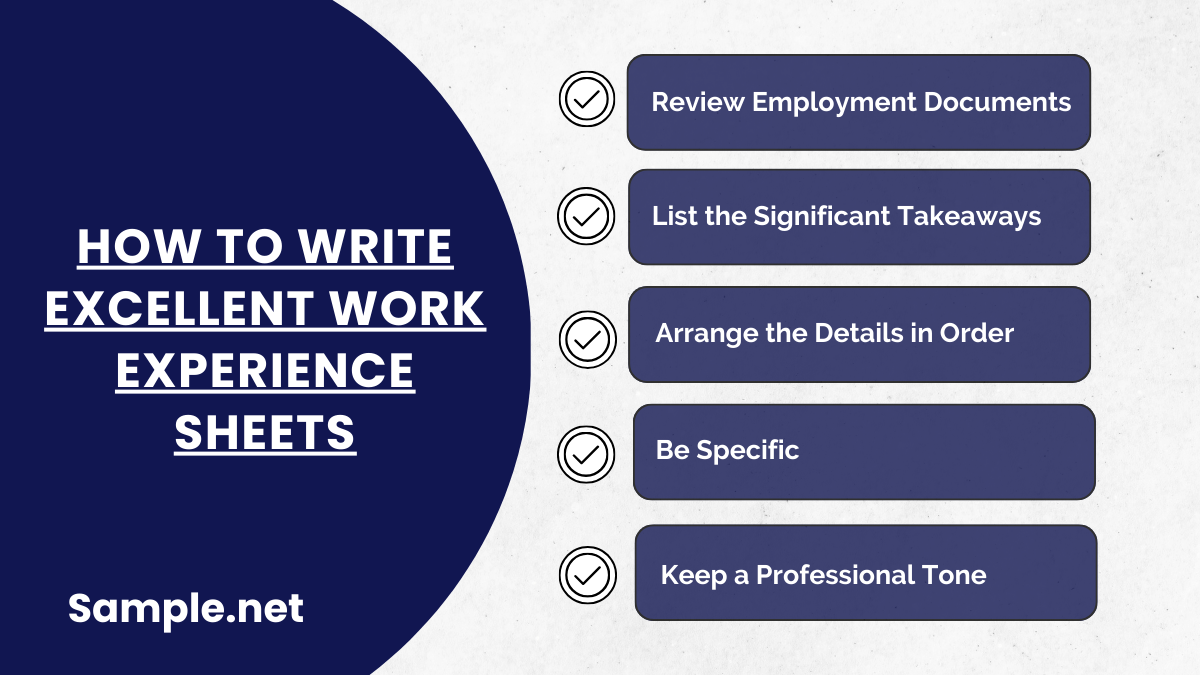
Are you aware of how competitive the work industry is? Based on a survey, there were 130.6 million Americans fully employed in 2019. And imagine how many more people are unemployed out there while having limited jobs available. Competition is tough. So, find a way to increase your chances of getting accepted to any business you are interested in joining. How so? Ensuring that your work experience sheet is excellently made. To do that, follow these simple steps as your guide below:
Step 1: Review Your Employment Documents
Yes, there are already sample work experience templates available that are ready for download. But, you would not know what details to fill in the sheet without reviewing the essential employment documents. You are expected to log your work experiences over the years in a sheet. And it would be tough when you forget some crucial information, particularly the names, dates, etc. So, review your employment records first until you are prepared to write a draft. You can also see more on Cover Sheet.
Step 2: List the Significant Takeaways
To start your draft, transfer all the critical takeaways from your records worth adding to the work experience sheet. What are these takeaways? Refer to the work experience sheet’s elements that were discussed earlier. Those elements are the needed factors to jot down in your document. Remember that only the relevant information is necessary, so there is no need to copy and paste all the details from employment records to your work experience form. You are on good terms if all the elements required are complete.
Step 3: Arrange the Details in Order
As you begin filling in the work experience sheet blanks with the takeaways, never forget to observe a sequence. With that, it means you should present information in chronological order. You must begin writing about your very first work experience down to the latest one. Or perhaps, you can start with the latest experience down to the oldest. The sequence is up to you, or whatever is required by whoever checks your sheet. Think as if you are narrating your experience to keep it easy. You can also see more on Tracking Sheet.
Step 4: Be Specific
Do not take the narrative presentation literally. Maybe you ended up narrating your whole work experience as if you are writing a book. Remember that the whole sheet is just a short but detailed guide about your previous work experiences. Focus on being specific with everything you wrote, especially in adding the elements. Lengthy sentences that can be shortened must be shortened. You are not after a word count in this sheet anyway, so keep it brief as long as you can say what you need to share.
Step 5: Keep a Professional Tone
Bear in mind that these documents are official records for a business. Expect to write things professionally. Be particular about the content and format of the document, too, because employers also judge them. There is no need for flowery words or greetings in the introduction because work experience sheets are not letters. They display your list of experiences and related details. And once you are confident with the form’s content, submit it. You can also see more on Statement Sheet.
FAQs
How do I get work experience?
You acquire work experiences when you apply for jobs. Even as a student, you can already begin your experience since it is not limited to working as an employee only. Try working on family business, interning, or perhaps, freelancing. The strategy is up to you, as long as you are prepared with the workload.
What is a personal data sheet?
The personal data sheet refers to an official document that outlines your logistical and biographical details. Information comes from your birth date, address, educational background, etc. And such sheets are needed by organizations and agencies for processing functions.
Are data protection fees necessary for businesses?
In the UK, businesses and traders are obliged to pay for data protection. But, there are a few exemptions. Just review if data protection fees are needed in your area to know if you are exempted or not. Nonetheless, data controllers with personal data regarding business-driven purposes might need to pay fees yearly.
How detailed should a Work Experience Sheet be?
A Work Experience Sheet should be concise yet informative. Focus on key roles, responsibilities, and measurable achievements without overwhelming details. Including specific metrics like revenue growth or project success rates enhances its impact.
What common mistakes should be avoided?
Avoid listing irrelevant experiences, neglecting to quantify achievements, and using inconsistent formatting. Ensure accuracy in dates and job titles and prioritize clarity over excessive details. You can also see more on Judging Score Sheet.
How does a Work Experience Sheet help in career transitions?
When transitioning careers, a Work Experience Sheet allows you to emphasize transferable skills and relevant experiences. By focusing on skills rather than job titles, you can bridge gaps between past roles and new career goals.
